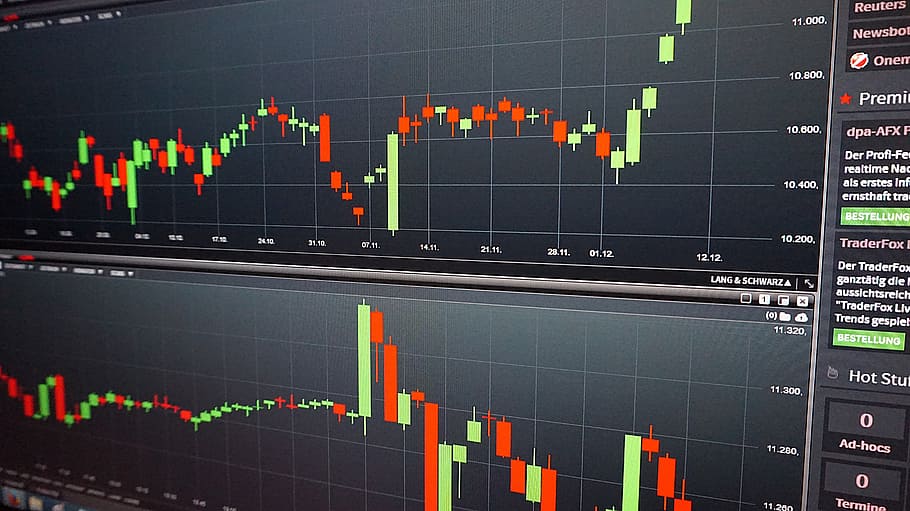Fundamental Analysis Tools and Methods
Technical analysis is only one approach to Forex trading. Another equally important method is fundamental analysis. Forex fundamental analysis tools and methods focus on economic indicators and political factors that can affect currency values. One of the most important Forex fundamental analysis tools is the economic calendar. This lists all major economic announcements and their potential impact on currency values.
Forex traders use the calendar to plan their trades around high-impact events. Another key Forex fundamental analysis tool is the Central Bank Rate Announcement. This is when the central bank of a country (like the US Federal Reserve) announces changes to interest rates. These announcements can have a big impact on currency values, so Forex traders need to be aware of them.
Forex fundamental analysis is a complex and time-consuming process. But it's an essential part of Forex trading, and can give you an edge over other traders who only focus on technical analysis. If you want to learn more about Forex fundamental analysis, there are many resources available online and in books. And if you're serious about Forex trading, consider taking a Forex course to get expert guidance from a professional trader.
What is fundamental analysis and what are its goals?
Fundamental analysis is a method of Forex trading that uses economic indicators to gauge the strength or weakness of a currency. Its goal is to identify currencies that are undervalued or overvalued, to make profitable trades.
There are several different fundamental indicators that can be used in Forex trading, including gross domestic product (GDP), inflation, unemployment, and retail sales. By analyzing these indicators, traders can get an idea of whether a currency is likely to appreciate or depreciate.
While fundamental analysis can be complex, it is an important tool for Forex traders to understand. By using fundamental analysis, traders can make informed decisions about which currencies to buy or sell, and when to enter or exit a trade.
The three main types of fundamental analysis are:
- Economic analysis: This involves using economic indicators to assess the strength or weakness of a currency.
- Political analysis: This looks at factors such as political stability, interest rates, and trade agreements to determine the direction of a currency.
- Technical analysis: This uses charts and other tools to identify patterns that can indicate the future direction of a currency.
While all three types of fundamental analysis are important, economic indicators are generally considered to be the most influential in Forex trading. By understanding how these indicators can affect currency values, traders can make more informed decisions about their trades.
The benefits and limitations of fundamental analysis
Fundamental analysis is a method of Forex analysis that attempts to predict future price movements by looking at economic, social, and political factors.
Most Forex traders use some form of technical analysis, which looks at past price patterns to try and predict future movements. Fundamental analysis is different in that it focuses on the underlying factors that can drive prices.
For example, if a country's economy is growing quickly, this will eventually lead to higher demand for its currency as businesses need to buy more of it to trade internationally. Similarly, if interest rates in a country are high, this can attract foreign investors looking for better returns, again leading to increased demand for the currency.
Of course, many other factors can affect Forex prices, and it can be difficult to predict how these will play out in the future. Nevertheless, many traders believe that by taking all of these factors into account, they can get a better idea of where prices are headed than if they only looked at technical analysis.
There are two main ways to conduct fundamental analysis: economic indicators and news releases.
Economic indicators are statistics that show how different aspects of an economy are performing. For example, data on inflation, unemployment, and GDP growth can give you an idea of whether an economy is strong or weak. News releases are announcements from central banks, governments, or other official bodies that can have a big impact on Forex prices. For instance, if the US Federal Reserve announces an interest rate hike, this is likely to cause the US dollar to strengthen.
One of the benefits of fundamental analysis is that it can help you to identify long-term trends. For example, if a country's economy is growing steadily, this is likely to lead to higher demand for its currency over time. However, there are also some limitations to this approach. One is that economic indicators and news releases can be difficult to interpret, and it is not always clear how they will affect Forex prices. Another is that Forex markets can be very volatile in the short term, so it can be difficult to predict where prices will be even a few days ahead.
Overall, fundamental analysis can be a useful tool for Forex traders, but it is important to understand its limitations. Economic indicators and news releases can be difficult to interpret, and Forex markets can be very volatile in the short term. Nevertheless, many traders believe that by taking all of these factors into account, they can get a better idea of where prices are headed than if they only looked at technical analysis.
To conclude, fundamental analysis is a Forex trading technique that looks at the underlying factors that can drive prices. Most Forex traders use some form of technical analysis, which looks at past price patterns to try and predict future movements. Fundamental analysis is different in that it focuses on the economic, social, and political factors that can affect Forex prices. While there are some benefits to this approach, there are also some limitations. One is that economic indicators and news releases can be difficult to interpret, and it is not always clear how they will affect Forex prices. Another is that Forex markets can be very volatile in the short term, so it can be difficult to predict where prices will be even a few days ahead.














